The BLE protocol is commonly used but complex, so I decided to glance at its framework.
TBD: security, sniffer. course site
- Basic Concepts:
Protocol Stack
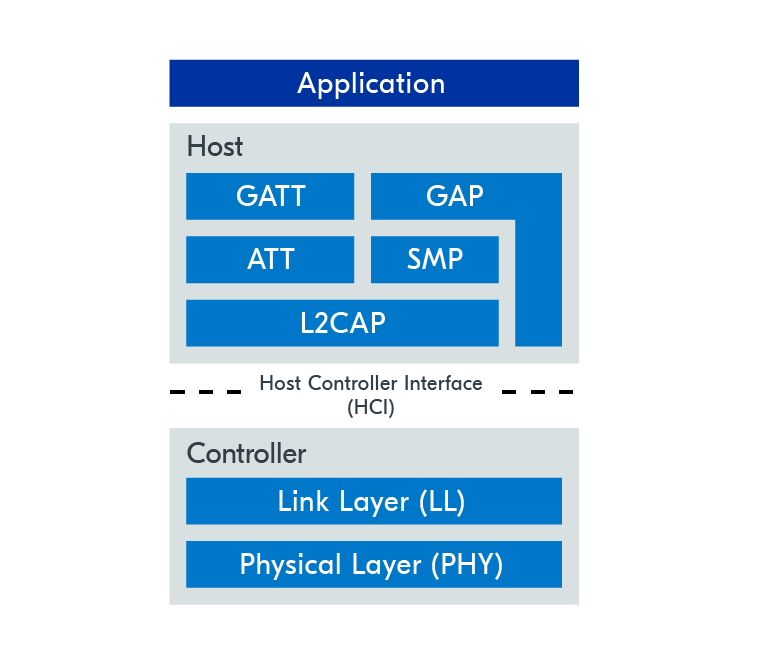
Host
- L2CAP(Logical Link Control & Adaptaion Protocol): encapsulating service for upper layers
- SMP(Security Manager Protocol): defines and provides secure communication
- ATT(Attribute Protocol): pieces of data exposed to other devices
- GATT(Generic Attribute Profile): sub-procedures for using the the ATT layer
- GAP(Generic Access Profile): devices discovery and connection-related services
Controller:
- PHY(Physical Layer): modulate datas onto the waves and receive data from waves
- LL(Link Layer): manage the state(standby, advertising, scanning, initialing, connection) of the radio
Roles
- Advertising & Scanning
- Central & Peripheral
The central scans the packets advertising by the peripherals and can initial a connection by sending a connection request.
Peripheral generally use less power than central - Broadcast & Observer Broadcast & Listen advertisement without connection.
GATT
Server: store data and provide methods for client to access data.
Client: access data on the server
Attribute: a standard data representation format
The Generic Attribute Profile
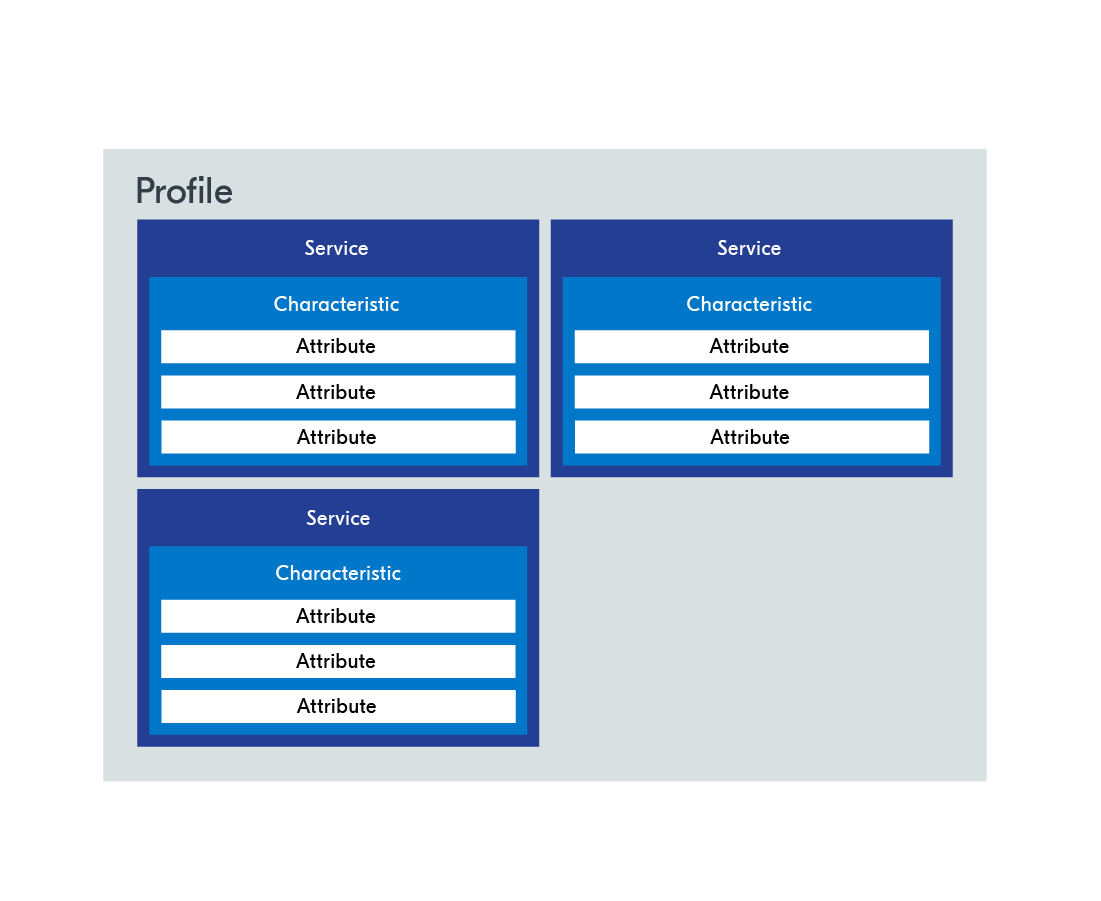
Radio Modes
- 1M PHY / 2M PHY: xMbps
- coded PHY: S symbols represent 1 bit to achieve longer communication.
- Advertising
- channels: 40 channels in BLE, 3 primary channels is mainly for advertisement and 37 secondary channels mainly used for data transfer after connecting.
- Scan Interval & Scan Window(the time in each interval)
- Scan Request & Response:
- Request: sent by central to request extra information without adevertising
- Response: respond to a scan request

- Extended advertising: the primary advertisement channels are pointing to supplementary information that is being advertised on the secondary advertisement channel.
- types:
- connectable & non-connectable
- scannable & non-scannable
- directed & undirected
- Address: a unique 48-bit address
- Public address: pay and register with IEEE registration authority
- Random address:
- static or private
- private: resolvable or non-resolvable
resolvable: use a pre-shared key IRK(Identity Resolving Key) to generate and resolve the random address.
- Packet Structure
- PDU(Protocol Data Unit):
- Advertising (channel) PDU
- Data (channel) PDU

- Advertisement PDU Header

- RFU: Reserved for future use
- ChSel: set to 1 if LE Channel Selection Algorithm #2 is supported
- TxAdd: 0/1. transmitter address is public or random
- RxAdd: 0/1. receiver address is public or random
- Length: payload length
- Advertisement PDU Payload
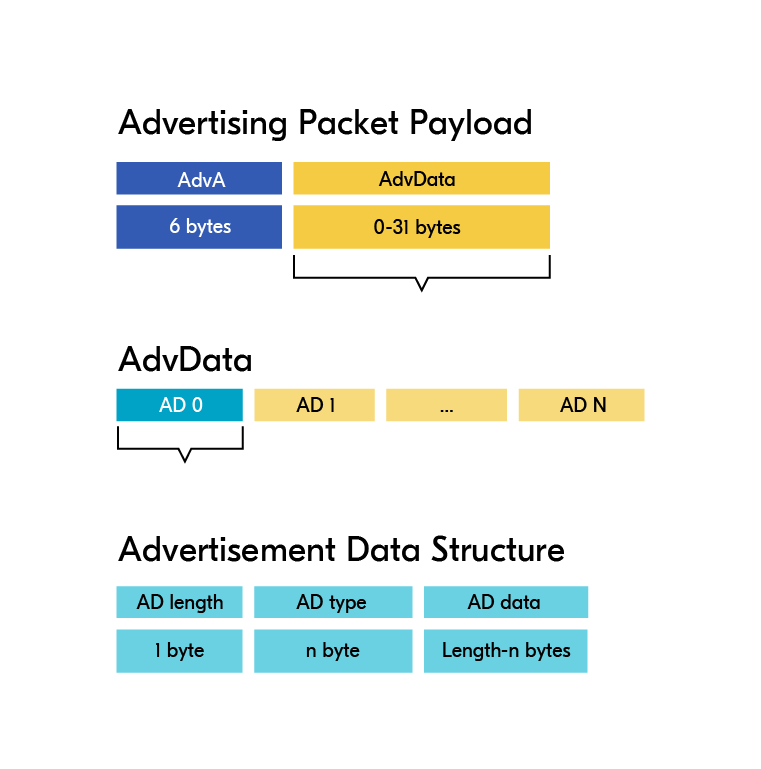
- AdvA: Bluetooth address of the advertising device (48bits)
- AdvData: data packet
- PDU(Protocol Data Unit):
- Connection
- Disconnect: by application, by supervision timeout
- Parameters:
- Connection interval
- Supervision timeout: successfully receiving the last packet before the connection is considered lost
- Peripheral latency: allow skip waking up for a certain number of connection events if it doesn’t have any data to send
- PHY radio modes: 1/2M, coded PHY
- Data Length & MTU(Maximum Transfer Unit): MTU is the number of bytes that can be sent in one GATT operation. Data Length is the number of bytes can be sent in one BLE packet.
- DLE(Data Length Extension): allow the data length increases from 27 bytes to 251 bytes to save time and power.
- Update the connection parameters
- connection interval, supervision timeout and peripheral latency: directed by the central, but the peripheral can request changes
- PHY radio modes, data length and MTU: set to the default values when a connection is first established. Either device can request to update the parameters, the other device will then either its supported values or state it is not supported.
- Connection interval
- Data Exchange in BLE
- GATT operations
- client-initiated: read, write, write without response
- server-initiated: notify, indicate(an acknowledgement is required from client)
Though the operations initiated by the server, the client is required to enable them first by subscribing the characteristic and enabling either notifications or indications.
- ATT layer
- Attributes
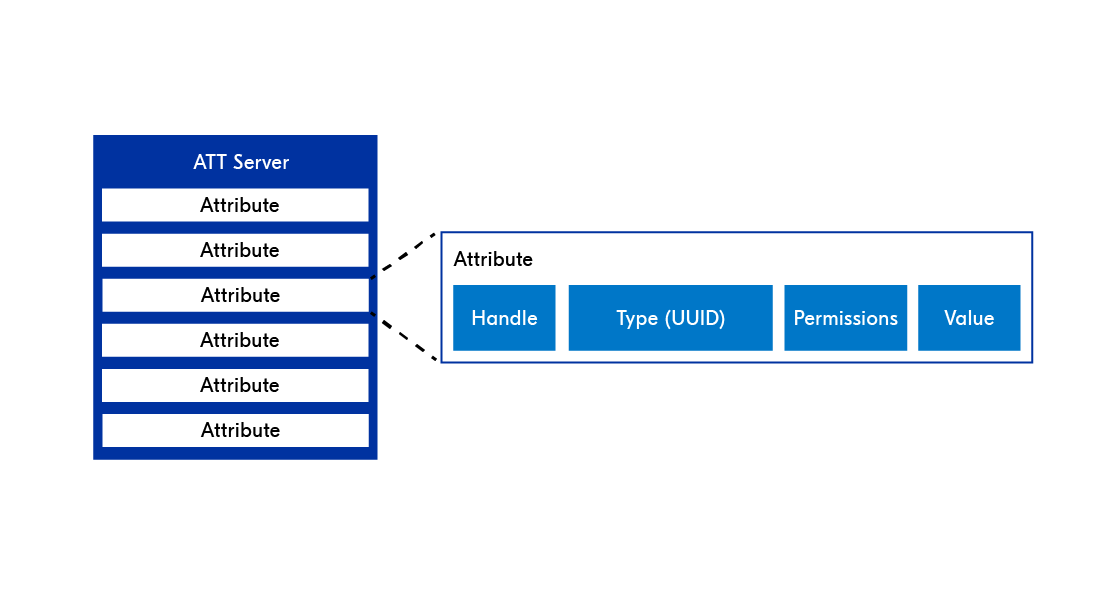
- Handle: 16-bit unique index in the attribute table assigned by the stack
- UUID: universally unique id tell the attribute type
- First Type: SIG defined 16-bit UUID
- Second Type: vendor-specific 128-bit UUID. Insert custom 16-bit IDs in the base UUID
- Permission: sercurity level(encryption and authorization)
- Value: the actual data or the information about other attributes
- Services and Characteristics
- Service
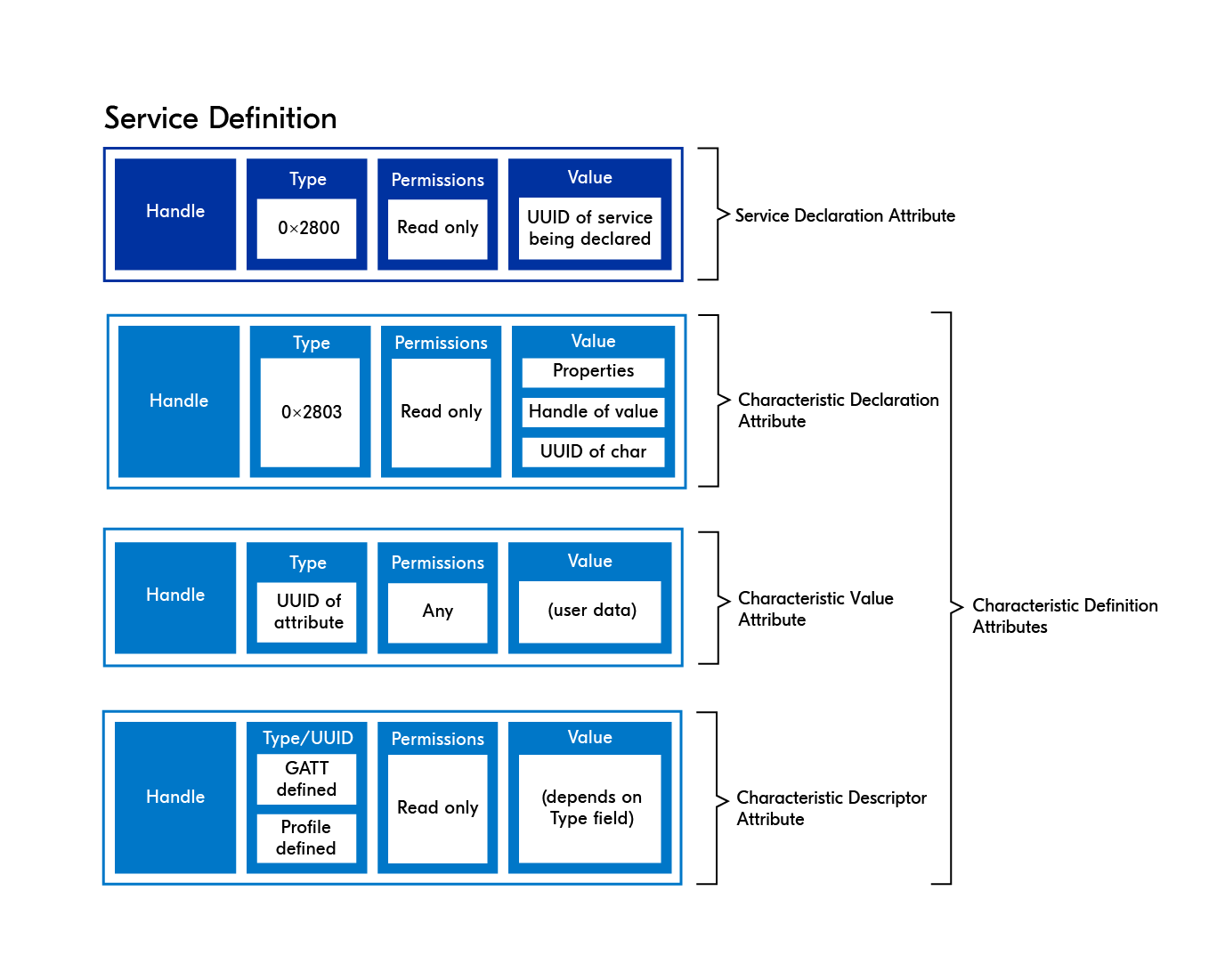
- Service declaration attribute: starts a service
- Characteristic definition attribute:
- Characteristic declaration attribute: holds the metadata about the Characteristic value attribute
- Characteristic value attribute: holds the actual user data
- Characteristic descriptor attribute(optional): holds more metadata about the characteristics
- CCCD(Client Characteristic Configuration Descriptor): writable for client to enable/disable server-initiated operations notify and indicate
- Service
- Attributes
- GATT operations